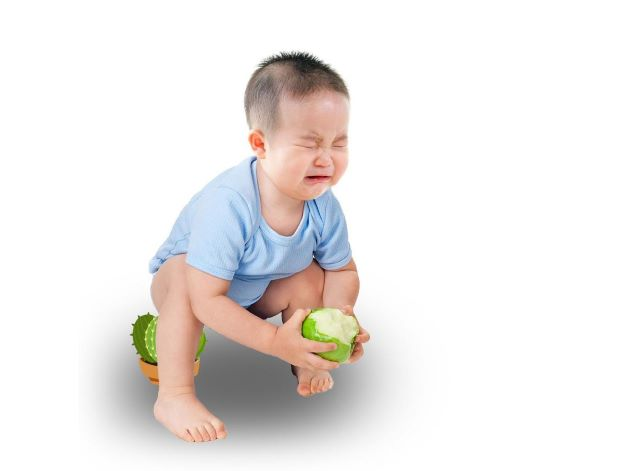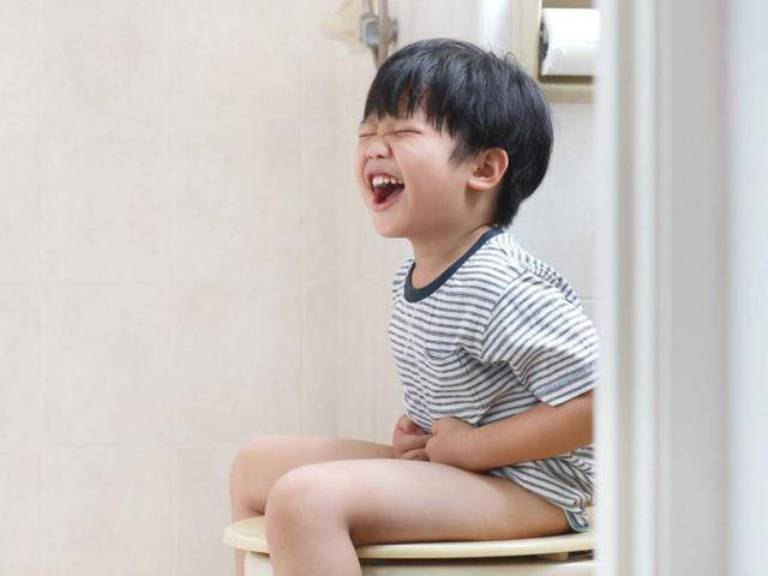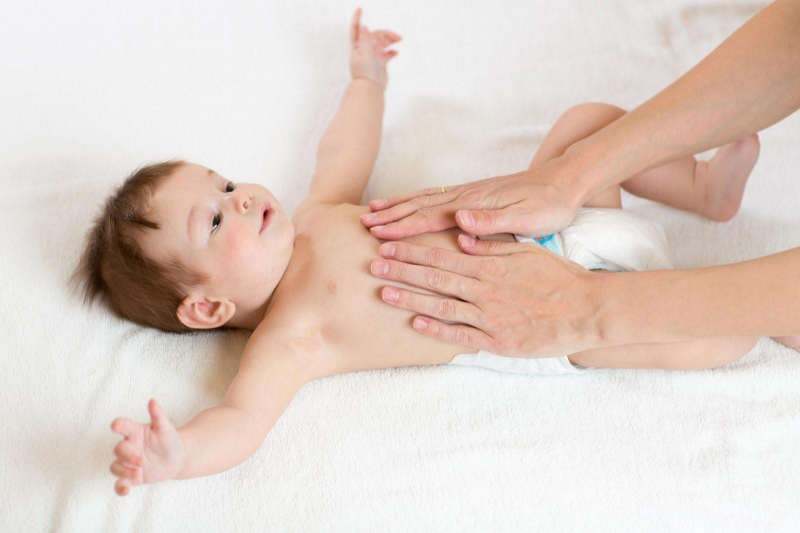Constipation is a disease related to the digestive system and is common in children. According to statistics, about 30% of children with constipation need to be taken care of. Children with constipation can be either organic or functional.
Symptoms when children have long-term constipation?
Chronic constipation, also known as persistent constipation, includes symptoms such as:
Children have bowel movements less than 3 times a week and this may decrease with the severity of constipation.
– Children have difficulty in defecation such as having to use all their strength to push, fully mobilize the abdominal muscles, diaphragm for a long time.
Children with long-term constipation should do? (Illustration)
– When going to the toilet, the child has solid, lumpy stools like goat feces.
– Constipated children may pass out blood due to strong force, leading to the mucosa of the anus being scratched.
– Children have severe abdominal pain, accompanied by symptoms of flatulence, abdominal distension.
– When the child has a bowel movement, it is necessary to regularly use outside support to make defecation easier.
Is it okay for children to be constipated for a long time?
Constipation for a long time and for a long time can lead to serious harm if not treated aggressively such as:
– Causing toxin accumulation in the body of children: Every day, the body needs to eliminate toxins by having a bowel movement every day, but when suffering from constipation for a long time, it is very difficult for children to have a bowel movement every day, causing the body to accumulate toxins and affect the organs. inside the body.
– Causes anal fissure: The reason is that stool has been accumulated for a long time in the colon, so it will be larger and more solid, the larger the size of the stool, the more it requires dilation in the anal canal. If the child tries to push, it will cause an anal tear, accompanied by bloody stools, very painful. Besides, when this is not corrected soon, it will cause anal bleeding leading to anemia.
– Causing pain every time you go out: When having pain every time you go to the toilet due to prolonged constipation, children will be afraid and tend to hold their bowels even when they have the need to do it.
– Causing the condition of para-anal abscess, anorectal inflammation, anal fistula: Due to long-term constipation, hard stools will form, children trying to push will further damage the lining of the rectum and anal canal, causing inflammation.
Risk of bowel obstruction: The longer the stool stays in the colon, the harder it becomes, which is the cause of intestinal obstruction or semi-obstruction with symptoms such as intermittent abdominal pain, bloating, inability to smell or pass stools.

Children suffering from constipation for a long time often cause many consequences. (Illustration)
Risk of increased intestinal pressure: Children may be at risk of appendicitis due to the condition of the appendix being stagnate with feces and fluid. In addition, prolonged constipation also weakens and dilates the large intestine, forms colonic diverticula and increases the risk of bowel perforation.
Psychological influence: When suffering from constipation for a long time, children will feel unappetizing, insomnia, irritability, body fatigue, gradually loss of appetite, obsession, crying and fear of not wanting to defecate.
How to help children pass stools when constipated
Give your child plenty of water to drink
The cause of long-term constipation in children may be due to children drinking less water, especially those over 1 year old (the transition period from drinking milk, eating powder to raw foods, lacking water). Therefore, children should be drinking enough water according to age to make bowel movements easier.
Increase the intake of green vegetables
Parents should increase children’s supplementation with laxative fruits, containing high levels of soluble fiber (soluble fiber that dissolves in fluids and intestines in the form of genes to help soften stools and soften stools). easier to pass stools).
Moreover, soluble fibers are also food for beneficial bacteria in the intestines to bind with bile acids in the intestines to emulsify fats of food (makes food easier to digest), osmotic. , connect with cholesterol and remove them from the body.

There are many ways to help your child have a bowel movement when constipated. (Illustration)
Some vegetables and fruits have laxative properties such as cauliflower, spinach, jute vegetables, legumes, bananas, avocados, apples, raspberries… should be added daily in the child’s menu.
Let your children be more active
Regular exercise, especially abdominal muscle contractions, will make defecation easier. For children from 1 year old and above, parents can let their children play and be active outdoors, do gentle exercises, and create psychological comfort. As for babies. Mother can perform some movements such as stretching hands, stretching legs or stretching…
Practice going to the toilet on time, the right way for your baby
This is an effective way to help children pass stools when they have long-term constipation, but many parents are quite indifferent. Creating reflexes for children and helping them maintain the right time to go to the toilet will help bring efficiency to the digestive system. However, parents should not allow children to use electronic devices and distract them while going to the toilet.
How to treat constipation for children according to folklore
– Soak the child’s anus in a basin of warm water: Soaking for about 5 minutes will help support the child to go to the toilet more easily because warm water has the ability to stimulate the anal sphincter, promoting intestinal peristalsis. Mother should note, only warm water should be used to soak the baby’s anus when the child is 1 year old or older and it is necessary to test the water temperature before putting the baby’s anus in to soak because the baby’s skin is very sensitive, too hot water can be dangerous. cause the baby’s skin to become red or burn.
– Abdominal massage for children: Abdominal massage helps strengthen bowel movements, making it easier for children to pass stools. When massage also helps children relax mentally, stimulate good eating and deep sleep, healthy digestive system. Perform massage in a clockwise direction, from the inside to the outside at the abdomen around the baby’s navel to promote the effect.

How to massage the abdomen for children. (Illustration)
Use honey: Honey is hot and greasy, so it will help stimulate activity in the anal muscles. Mother just need to use a little pure honey, apply it on a cotton ball and pick it up deep in the baby’s anus, doing 5-6 times a day, the child can stop constipation.
– Use locust: LAbout 5-6 locusts, bring them to a boil and put them in a pot of boiling water with 500ml of water. Wait for the water to cool, then use a syringe to pump this solution into the child’s anus. The baby can go to the toilet right after.
– Use spinach: Due to the viscous nature of the tops, lubricating the baby’s anus is very effective. The mother just needs to take a stalk of spinach, wash it, remove the outer skin and pick the anus of the child 3-4 times. Do it continuously for a few days, the constipation will stop.
When children suffer from constipation for a long time, parents need to calm down and find appropriate treatment. Do not give children laxatives, enemas, absolutely do not enema, leading to anal damage. reduce anal spasms and make the baby dependent on the drug.
at Blogtuan.info – Source: Eva.vn – Read the original article here





